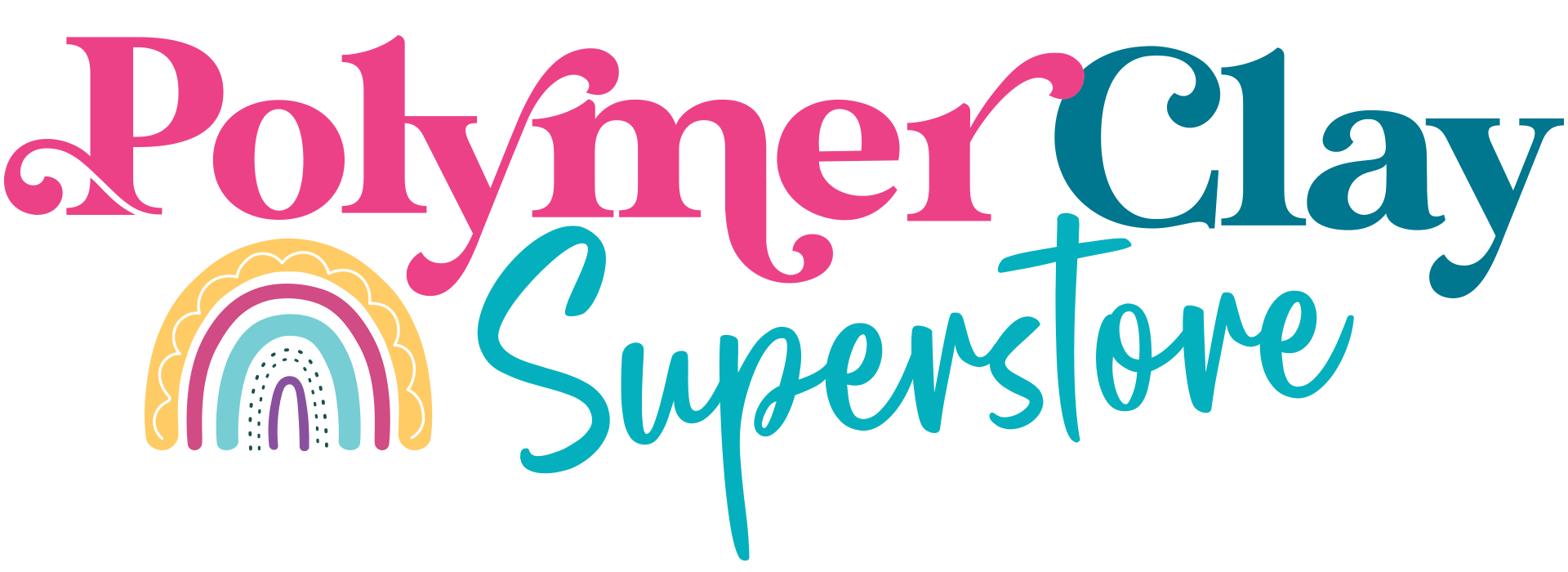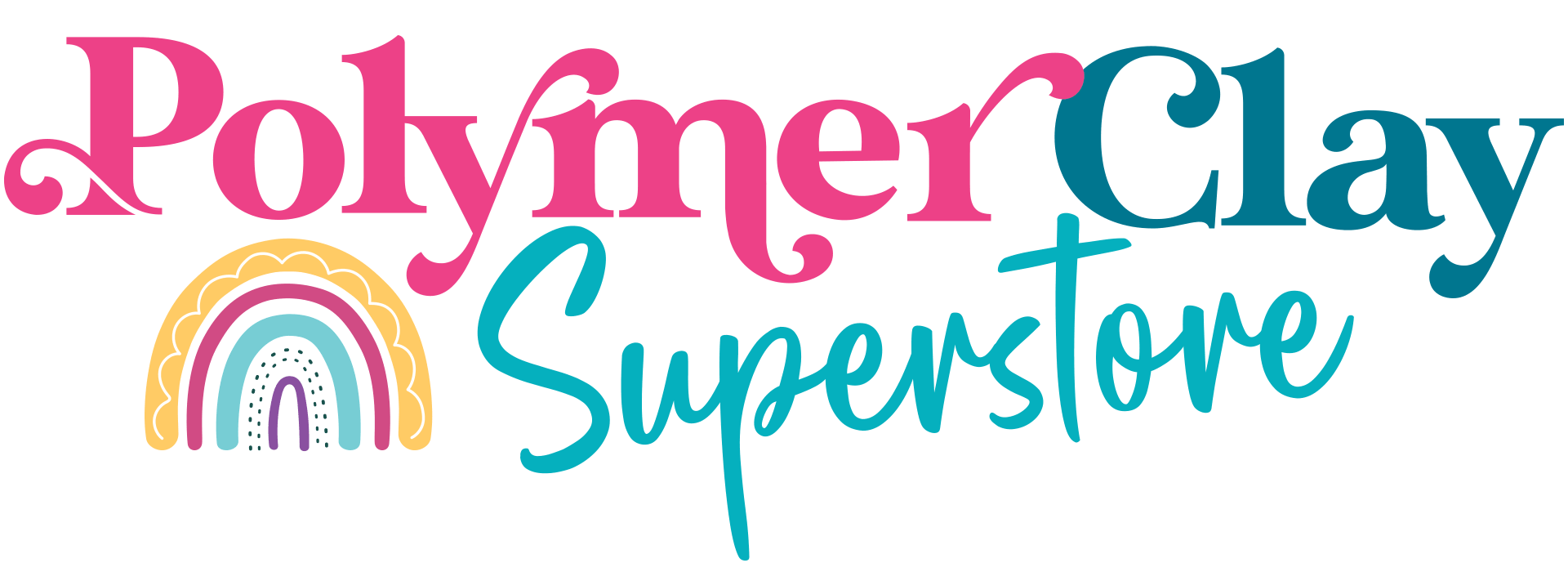Sculpey is a Polymer clay brand that carries many different lines. Each line has different pros and cons that make it best for a certain situation.
You may be asking 'what's the best polymer clay to use?' The answer is: it depends. Each clay line does different things better. Below, we have a description for the best uses of all the clay lines we carry.
Types Of Clay
Original Sculpey is just that, the original clay from Polyform Products. Sculpey is soft and pliable, works and feels like ceramic clay, but will dry out when exposed to air. It is available in white and the new Terra Cotta, and will have a bisque finish. It is used in classrooms and is the most economical choice. It is recommended for bulkier projects and may become brittle in thin areas after curing.
Super Sculpey is a more durable development of the Original Sculpey, and can be "carved" and used for projects requiring fine details. Beige-pink in color, it is easy to condition, maintains fine tooling and detailing and will have a matte, slightly translucent finish. It is used for mold-making, by movie studios and professionals world wide and is a favorite with doll-makers, having a finished porcelain look to it. This clay is great for sculpting and making figurines. The flesh color to the clay gives it a great look, and can easily be painted.
Sculpey III is popular for its softness, finish, and variety of vivid colors. Sculpey III has won parenting awards and is easy to condition and use, making it the perfect clay for children as well as adults. Once cured, Sculpey III bakes hard and takes on a matte, bisque type finish. Sculpey III maintains tooling and details and can be used for figurines, jewelry, home decor and millefiore canes. Sculpey III can be easily mixed to form your own custom palette and can be mixed with other polymers such as Prēmo! Sculpey.
Sculpey Souffle is an innovative lightweight clay perfect for jewelry making! Its strength and ability to hold detail makes it an excellent clay for advanced techniques such as mokume gane, bargello and caning. It is strong and self supporting and doesn’t crack in large pieces which makes it great for larger clay projects as well. Beautiful suede finish when baked.
Premo! Sculpey is a popular choice for its strength and beautiful colors. It was developed as a result of artists' ideas of the perfect polymer clay. Although it may seem stiff at first, it is easy to use and stronger than the Sculpey III. It holds sculpting lines well and also is used as a "backing" with other clays. It comes in an array of colors, including metallics and pearlescents, making it a beautiful choice for jewelry. Its colors are based on the Grumbacher color line, making it possible to mix like paint. It finishes as a natural, satin look that can be sanded to a semi-gloss.
Sculpey Super Flex Bake & Bend is the make it and play with it clay. It is a great new clay that stays bendable after baking. This clay little stiffer than the other clays, but warming it under a light bulb will ease the conditioning process. Once softened, this clay is easy to work with. Its bendability after baking makes it perfect for figures and dolls that can be posed and flexible jewelry.
Sculpey Ultra Light is a new clay by Sculpey that boasts a light weight, ease to handle and strength after baking. This clay even floats-making it perfect for projects like bath toys or floating candle holders. It also ideal for paper crafts, and keeping jewelry and ornaments light.
Transclucent Liquid Sculpey is a pourable clay that becomes translucent with baking. Colors can be made by mixing it with paints and powders. It is essential as an adhesive between clays or clays and other surfaces. It is perfect for transfers, "stained glass", or adhering clay to jewelry findings.
Does polymer clay expire?
An unopened package of Polymer clay won't expire if it is stored in a cool location. If the package is already open, consider putting it into a plastic bag and storing it in a dark, cool place. Clay will start to harden and cure around 100 degrees Fahrenheit. Keeping your clay out of sunlight and sealed from air will help it to last as long as possible.The best way to stop Polymer clay from expiring is to keep it in an airtight, dark, cool spot.
If your clay seems hard or unworkable, try taking it between your hands and rolling it into a 'snake' to give it a little warmth, which should make it softer. Give it a little bit of work and time, it sometimes takes a little bit of work to get your clay workable, but if your clay crumbles instead of rolling, your clay may be expired.







